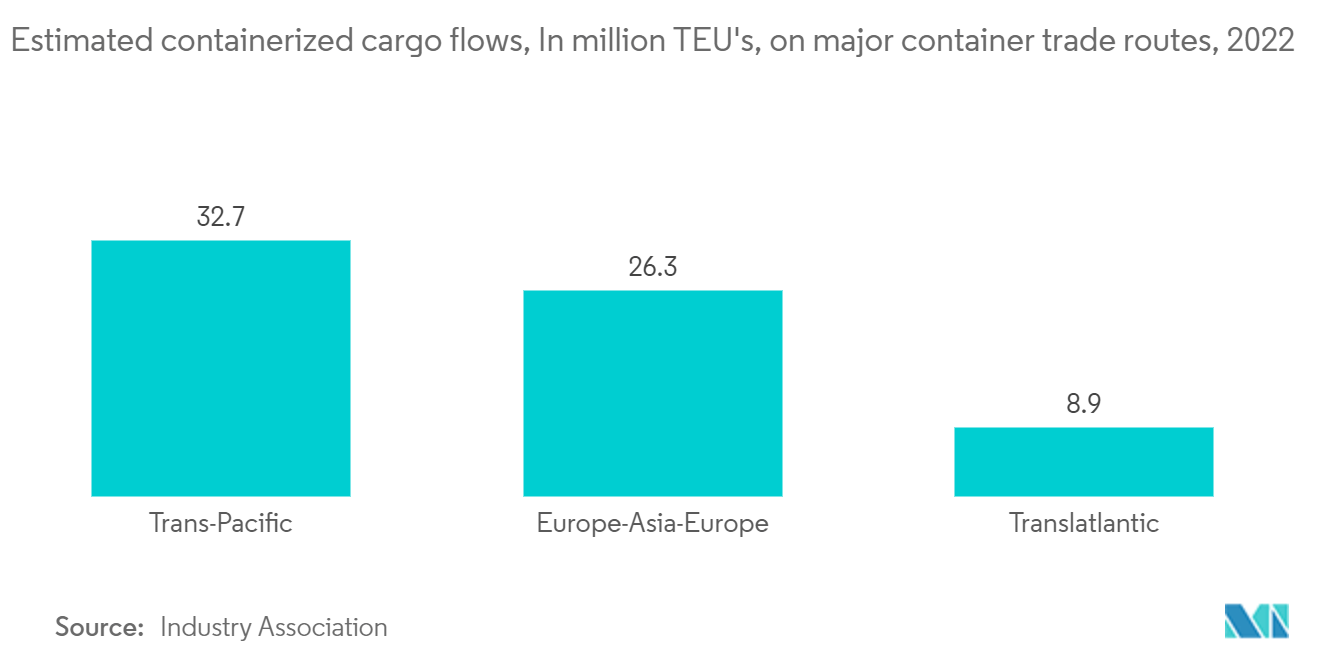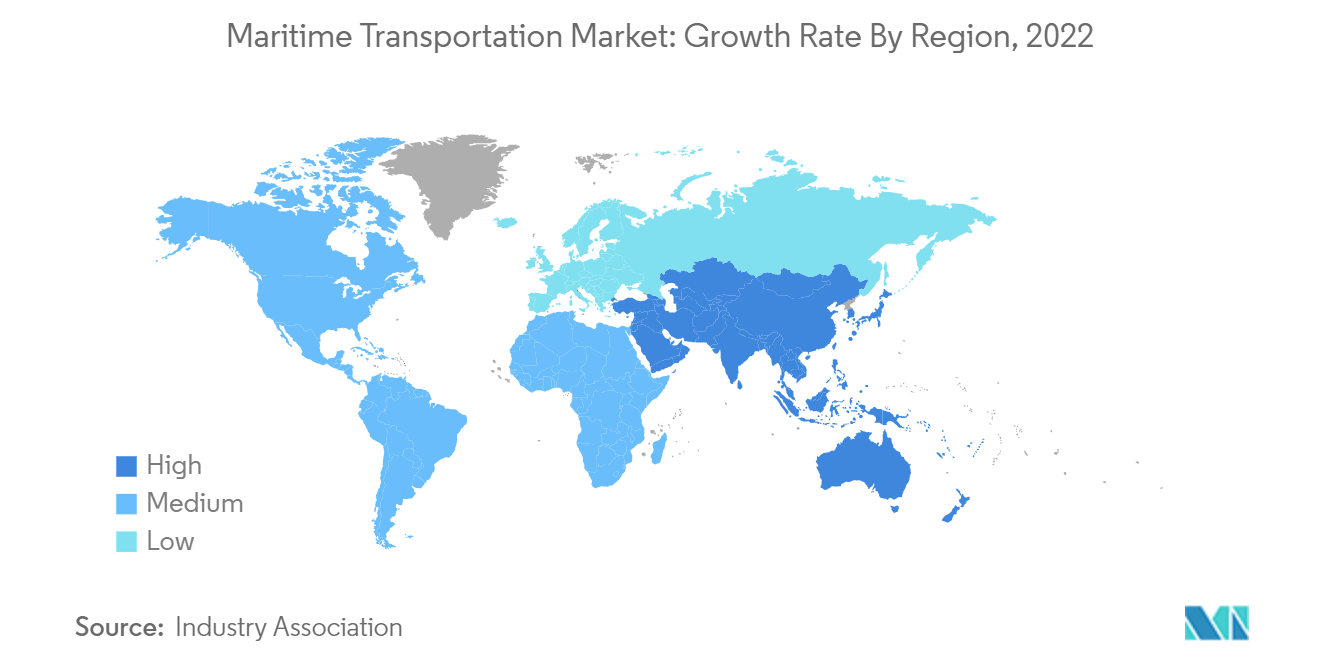Market Trends of Maritime Freight Transport Industry
Containerization is Evolving as a Trend
According to UNCTAD (United Nations Conference on Trade and Development), international maritime trade is driven in particular by growth in containerized, dry bulk, and gas cargo. However, uncertainties like geopolitical tensions and global pandemics like COVID-19 remain an overriding theme in the current maritime transport environment, with risks tilted to the downside.
The long-term trend toward the containerization of general cargo is upward rising. A large share of globalized containerized trade continued to be carried across the major East-West containerized trade arteries, namely Asia–Europe, the Trans-Pacific, and the Transatlantic. Containerized and dry bulk trades are expected to register a compound annual growth rate of 4.5% and 3.9%, respectively, over the forecast period.
Today, over 17 million shipping containers are used worldwide, which is evolving constantly. With global trade expanding rapidly, the demand for efficient cargo transport will only grow as well.
Supply and demand have facilitated growth and change since the first standardized containers, but they’re not the only factors that have impacted how many containers are on a container ship. The size of containers over the years has affected the number as well.

Asia-Pacific is the Fastest Growing Market
The Asian-Pacific region consists of some of the fastest-growing economies in the world, like China and India. The trade exchanges support this growth in the maritime transportation sector by these countries, of which the majority of international trade takes place via sea routes.
Trends in global container port-handling activities also highlight the central role of Asia in global trade and shipping. Asian countries are experiencing a large increase in intra-regional trade, mostly based on manufacturing trades and reflecting fragmented production processes, where parts are generally manufactured in multiple locations across Asia and assembled in another location. This is also expected to increase trade, supported by marine transportation. Demand growth originated mostly in Asia, bolstered by ongoing energy policy shifts and rising export capacity in Australia and the United States.
The Asia Pacific region is characterized by the presence of some major countries that contribute substantial fleet value to the maritime freight transport market. China, Japan, Singapore, and South Korea are among the top ten ship-owning countries worldwide.
For instance, as of January 2021, China's total fleet asset value reached USD 196 billion, whereas Japan's total fleet asset value reached USD 188 billion, Singapore's total fleet asset value was USD 79 billion, and South Korea's total fleet asset value reached USD 59.6 billion.
In addition to these markets, there are several other potential developing markets for the adoption of maritime analytics, such as India, Indonesia, Vietnam, Malaysia, the Philippines, and Thailand. As per the Internal Monetary Fund (IMF), in December 2022, the top 10 sea trading countries included China, South Korea, Malaysia, and Taiwan.

